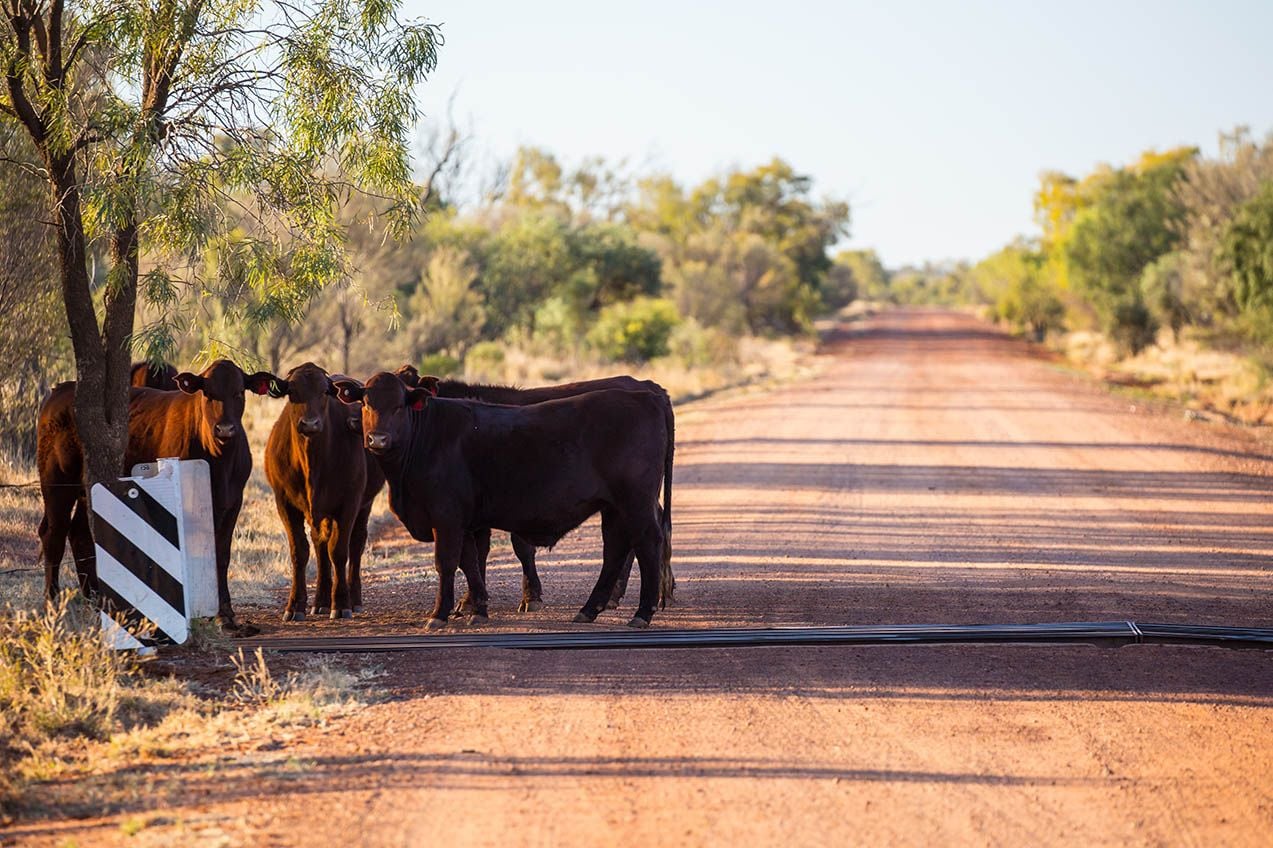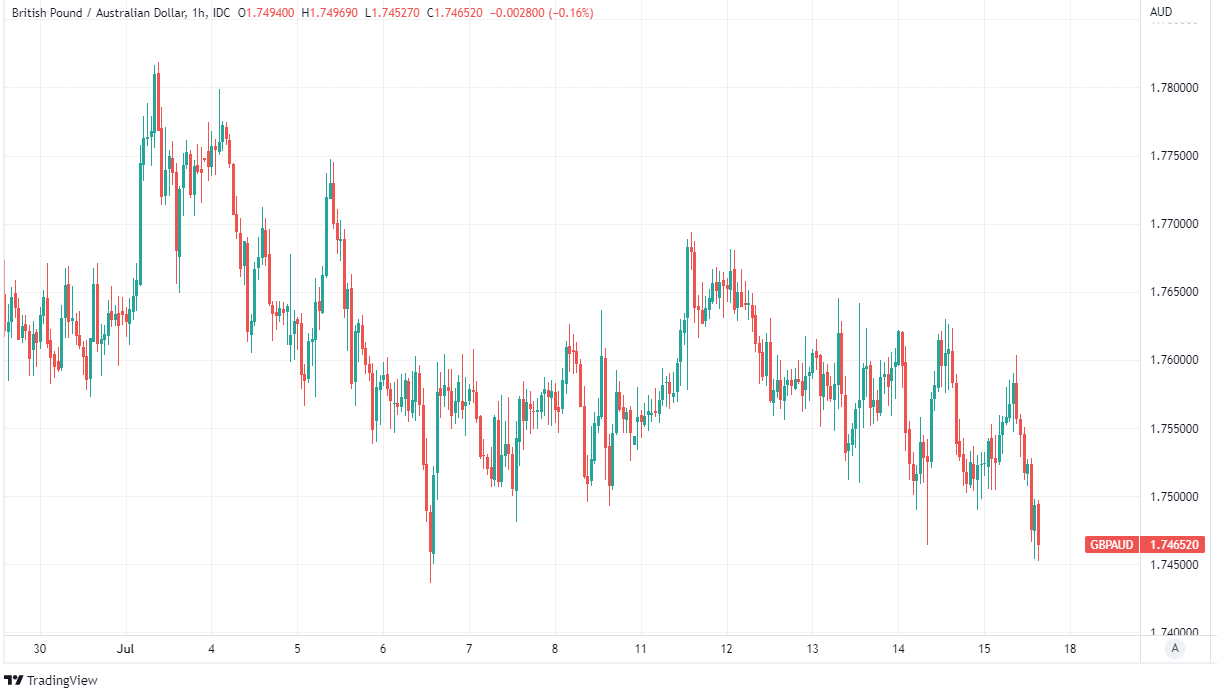GBP/AUD Rate Vulnerable as Market Looks to RBA and Fed
- Written by: James Skinner
-
- GBP/AUD vulnerable after rebound attempt curtailed
- Buoyant market expectations of RBA helping lift AUD
- Continuing jobs boom may raise Aussie wage growth
- Fed leans against market’s rate views & reins in USD
- All helping buoyant AUD/USD to suppress GBP/AUD

Image © Adobe Images
The Pound to Australian Dollar rate was wallowing near July lows ahead of the weekend after Australia’s jobs boom and Federal Reserve (Fed) pushback against market expectations for interest rates curtailed GBP/AUD’s earlier attempted rebound and left it at risk of further short-term setbacks.
Australia’s employment boom continued in June with the creation of 88.4k new jobs, the most of any month since November 2021 and the country’s reopening from its most severe ‘lockdown,’ which pushed the jobless rate down to a new historic low of 3.5% in data out this week.
“There is little sign of labour market easing ahead, with 480,000 job vacancies and ongoing strength in demand indicators,” says Catherine Birch, a senior economist at ANZ.
Thursday’s data reflects exactly the kind of economic reality that could promote wage and salary growth of the sort that might lead to a greater sense of urgency at the Reserve Bank of Australia (RBA) when it comes to the cash rate.

The continuing job boom lifted the market-implied cash rate for the August 02 RBA meeting from 1.75% to 1.89% over the course of this week, which has in turn been a key source of support for the buoyant Australian Dollar during the latter half of the week
Market-implied measures suggest investors now fully expect another 0.5% increase in August and that they have begun to entertain an even larger move, likely explaining why the Aussie has been among the top performing major currencies in recent days.
But recent comments from Governor Philip Lowe suggest the RBA will not be easily spooked into hasty, if not panicky decisions when it comes to its interest rate and this is a good reason for markets to be cautious when forming expectations aout the Australian interest rate outlook.
"Australia has long had a flexible medium-term inflation target, which, by design, can accommodate deviations of inflation from target. For a number of years inflation was below target and now it is above. What is important here is that we chart a credible path back to an inflation rate of 2 to 3 per cent," Governor Lowe told the American Chamber of Commerce in Australia (AMCHAM) in June.
“Australians should be prepared for more interest rate increases. The level of interest rates is still very low for an economy with low unemployment and that is experiencing high inflation. I want to emphasise though that we are not on a pre-set path. How fast we increase interest rates, and how far we need to go, will be guided by the incoming data and the Board's assessment of the outlook for inflation and the labour market,” he added.
Australia’s Dollar was not alone in rising against the U.S. Dollar and Sterling on Friday, however, as many currencies capitalised on a softening of the U.S. Dollar following remarks from Federal Reserve (Fed) rate setters that appeared to push back against recently escalating expectations for U.S. rates.
Forgot my sunglasses! But enjoyed the tour anyway… https://t.co/YWJoDumFYK
— Raphael Bostic (@RaphaelBostic) July 15, 2022
Third party newswires reported on Friday that Atlanta Federal Reserve President Raphael Bostic told an event hosted by the Tampa Bay Business Journal that the Fed's current strategy has the “greatest likelihood of success.”
President Bostic also reportedly said that by moving “too dramatically” the bank would risk undermining the U.S. economy in an apparent pushback against the Wednesday and Thursday notion that the Fed could be likely to follow in the footsteps of the Bank of Canada (BoC) this July.
The BoC lifted its interest rate by a full percentage point on Wednesday whereas Fed Chairman Jerome Powell and Federal Open Market Committee members have said repeatedly in recent weeks that July’s policy decision would be a toss up between a 0.5% and 0.75% increase.
“As of today, I would advocate 75 basis points again at the next meeting,” St Louis Federal Reserve President James Bullard reportedly told Japan’s Nikkei on Wednesday following the release o inflation data for June.
U.S. inflation rose to a new high of 9.1% in June and core inflation rose strongly in month-on-month terms, thus suggesting that the road back to the Fed’s 2% target could be a long and arduous one.
Financial markets shifted to price-in some probability of a 100 basis point or one percentage point July increase in the Fed Funds rate following Wednesday’s data, which weighed heavily on risky assets and currencies while lifting the perceived safe-haven that is the U.S. Dollar.
“With the CPI data in hand, I support another 75-basis point increase, bringing the target range for the federal funds rate to 2-1/4 to 2-1/2 percent before August. I judge that level is close to neutral, by which I mean a level that neither stimulates nor restricts demand,” Federal Reserve Board Governor Christopher Waller said on Thursday, in another blow to that segment of the market hoping to see a 1% July increase in the Fed Funds rate.
Thursday and Friday’s pushback from the Fed was balm for those parts of the markets that had recently been crushed by investor worries about the global economic outlook, which were themselves the result of concerns about the lengths that central banks might go to in order to rein in inflation.
That relief supported many non-U.S. currencies on Friday and helped to suppress GBP/AUD, which tends to closely reflect the relative performance of Sterling and the Aussie when each is measured against the U.S. Dollar.
Sterling does often trail behind the Aussie when the U.S. Dollar is in retreat, however, and so could be likely to remain suppressed during the days ahead if the greenback furthers its Friday retreat.

